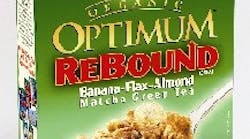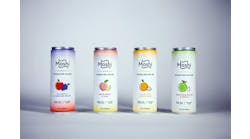Organic foods and grocery retailing in general are undergoing major changes now that Wal-Mart has started selling organic foods. The prices may be 10 percent higher than Wal-Mart’s “everyday low prices,” but they will be much lower than typical organic food pricing, which can be 50 percent to 100 percent higher than the non-organic versions of the same foods. Once Wal-Mart enacts a strategy, it can change the landscape for many companies due to its sheer size in the marketplace.
Consumers are purchasing organic foods for such perceived benefits as better nutritional value, freshness, healthfulness, taste and a vague connection with family farming. Produce is the most popular organic product, purchased by 37 percent of shoppers, followed by cereals, breads and pastas at 25 percent. Consumers looking for organic are most likely to make their purchases at a supermarket (48 percent) followed by an organic/natural foods store (18 percent).
In scanning the wide variety of organic products available for sale today, we found Nature’s Path has been producing organic healthful cereals that deliver a number of claimed benefits to the consumer. It took an interesting step last year when it introduced Optimum ReBound. The cereal is clearly targeted at morning exercisers, with its 10g of protein per serving claimed to be capable of repairing and refueling muscles fresh from their daily workout.
Understanding the marketplace
Many consumers are looking for their food to naturally deliver health benefits instead of having those benefits engineered in. But many of us get confused by what organic means. Organic is a subgroup of natural foods. To claim organic today, a food has to meet specific standards set by the government. “USDA Organic” must have no synthetic fertilizers, few chemical pesticides, no antibiotics or hormones, no irradiation or genetic engineering, no animal byproducts in animal feed, and access to the outdoors for all livestock. For a breakfast cereal, this means the cereal is more than just healthy grains; its grains contain neither genetically modified organisms nor pesticides.
The cold breakfast cereal market was estimated at $6.84 billion in 2002 (ironically, not including Wal-Mart sales, according to how Information Resources collects data). Unit sales were down 2.2 percent. Kellogg, General Mills, Post, and Quaker have approx 84 percent of the market.
Kellogg, at a 31 percent share of the market, says 15-20 percent of its sales come from new products (according to IRI). New growth areas for cereal are expected to be in health, women’s needs, organic/natural and licensed products.
The natural food retail segment accounts for less than 5 percent of the total grocery market. The organic/natural market was about $2.2 billion in 2004, according to ACNielsen. Key venues for natural and organic are Whole Foods and Wild Oats supermarkets, but these make up only 15 percent of the natural/organic food market.
Nature’s Path helps morning exercisers refuel their muscles with Optimum ReBound cereal.
Nature’s Path appears to be rediscovering areas of cereal that have been forgotten. One of those is protein. Every so often, protein-rich foods appear to become hyperfashionable. Either before or after a swing toward muscle-based protein (the last Atkins craze is an example), there is a movement toward non-muscle protein. Life Cereal and Special K are examples of familiar cereals developed years ago as grain based alternatives to muscle protein.
So Nature’s Path Optimum ReBound, with 10g of protein per serving, needs to be clever to deliver a new message about cereal protein. Nature’s Path has directed the consumer to consider repairing and refueling muscles from their daily exercise using a whole food cereal instead of supplements, powders or beverages.
Ninety percent of people who exercise consistently do so in the morning. So creating a breakfast cereal to refuel and repair muscles after exercise makes sense. Providing all this and organic too appears to be on trend and ahead of the product development curve.
Insights
Breakfast is the one meal that consumers agree is about health, we’ve learned from Our It!s Convenient, Crave It! and Healthy You! studies. The key attributes consumers identify for a convenient breakfast cereal are taste, good for me and price. The key attributes for a healthy breakfast cereal are taste, price, vitamins and minerals, preferences of other family members and healthiness.
Looking across these aggregated responses indicates taste is critical. Healthiness and price are second. Freshness is usually judged through flavor and textural differences.
Organic foods mix this hierarchy up a bit where healthiness of the food is ordered first and the taste is typically second. But this is for health-oriented consumers. Mainstream consumers appear to always put good taste first.
Nature’s Path is blending the health concerns of new age consumers with the needs of mainstream ones for a good tasting breakfast cereal that can actually deliver on multiple promises. Some of the key benefits promised on the Nature’s Path box are easily quantifiable: high fiber, low sodium, high protein, whole grain and omega-3 fats. Others, such as “muscle recovery,” take some faith.
With convenience as a given, the key trends in breakfast cereals are value, taste and healthiness.
Value: Private label or store labels have improved their quality and sensory attributes. This drives name brands to higher levels of creativity and delivery of benefits to justify the price difference.
Taste: Sweetness and taste novelty are ways to drive sales of breakfast foods. Consumers have different interpretations of what is good flavor in a breakfast cereal. Better packaging films have helped freshness. Nature’s Path uses a variety of textures (grains, fruit, etc.) and unexpected flavors (banana, almond and green tea) to deliver a unique flavor and texture experience.
Healthiness: Breakfast cereals have focused on reducing the amounts of fat and calories. In the 1950s through the ’70s, a great deal of cereal fortification occurred, allowing breakfast cereals to deliver as many goods as multivitamins. There has not been strong attention toward providing healthiness via naturally occurring positive additions of ingredients except for calcium in the milk. The additions of fruit may provide the opportunity. Nature’s Path takes this a step further with protein and fiber. The whole package delivers satiety, promises muscle recovery and still tastes good.
The experience
Nature’s Path Organic Optimum cereals are available in a variety of “flavors” that are linked to benefits. Optimum Zen (inner harmony) uses ginger, cranberry and inulin to deliver gut health benefits. Optimum Power has soy, flax and blueberries. Optimum Slim is for weight control.
Optimum ReBound relies on a power foursome of banana, flax, almond and green tea to deliver a natural nutrient cocktail. The package is green with a burst of the word organic across the top. The photo shows the texture and variety of grain flakes, nuts and fruits in the cereal mix. High Fiber, No Trans Fats, Low Sodium are spelled out at the top; also apparent are 400 mg omega-3, 10g protein, 6g fiber. The USDA Organic and Whole Grain badges are proudly displayed.
The box also suggests “enjoy within 60 minutes of workout,” clearly linking the benefit of the protein to the activity. Turn the box over and there is a science lesson in muscle recovery, leveraging the fact that most consumers read the cereal box while eating the cereal.
The product has a number of different pieces with flakes: flattened grains, clusters and fruit. So it was interesting to look at. Aroma was slightly sweet. The bananas have a strong natural banana flavor.
Most of our testers keyed into the health benefits but began to worry how the product would taste. Optimum ReBound had some interesting reactions while being tasted. The chalky bitter notes of many high protein/wholesome cereals is missing. The crunch and chew of the piece variety mixed with nuts generates a low sweet flavor that helps the cereal taste good. Almost not healthy tasting. We thought: Is this the new taste of organic cereal?
The cereal held its crispy, crunchy texture under milk for quite a while. You leave the meal with a strong feel of satiety. You’ve really eaten something, not just milk and airy pieces of cereal.
This product had 190 calories per serving and 50 calories from fat, along with the usual multivitamins. The fats are considered to be “good” fats, so the testers felt the fat content was acceptable. The fiber content at 6g delivers 24 percent of the recommended daily amount.
The box lists only five servings. It is very dense and does not fill the entire box. This density could create a problem if the whole family sat down to eat breakfast together and ate the whole box at one meal.
Does the product deliver?
Nature’s Path Optimum ReBound is about healthy eating that delivers benefits. The food is healthy; the concern is whether the consumer can measure the protein benefit in a short enough amount of time to stay with the cereal. The product delivers a healthy product that tastes better than expected. And the brand is about taking care of the Earth through sustainable organic farming.
How to make the idea bigger: We picked the Optimum brand because we felt it was doing a lot to make the organic idea bigger. Most tasters, while nervous about the initial idea of Optimum ReBound, felt this was something they could stick with for better eating.
Healthy benefits that make sense at breakfast delivered through whole natural foods – this was a great win with all the testers. Getting trial is based on credibility and belief that the benefits will be delivered. It takes more than a science lesson on the back of the box to get to belief.
Not everyone is going to go for all the billboarding Optimum does on its cereal box. But it does attract attention and it did educate a few of us.
Rating: This product delivers on the promises.
Market Potential: Good.
Hollis Ashman is chief strategist and Jacqueline Beckley is president of the Understanding & Insight Group, a strategy, business and product development firm that connects with consumers using qualitative and quantitative approaches. See www.theuandigroup.com.
Jacqueline Beckley was named an IFT Fellow at the Institute of Food Technologists’ annual meeting and expo in June. “IFT Fellow is a unique professional distinction which shall be conferred only on a living person with outstanding and extraordinary qualifications and experience for his or her overall contributions in the field of food science and technology,” states the nominating form. We congratulate her and are proud to have her on the Food Processing team.


